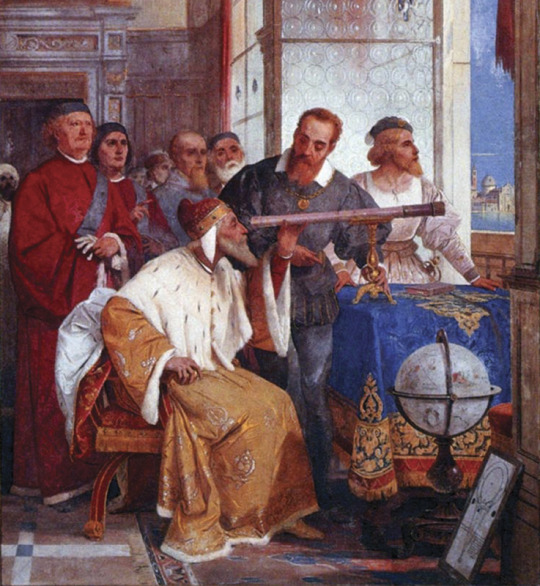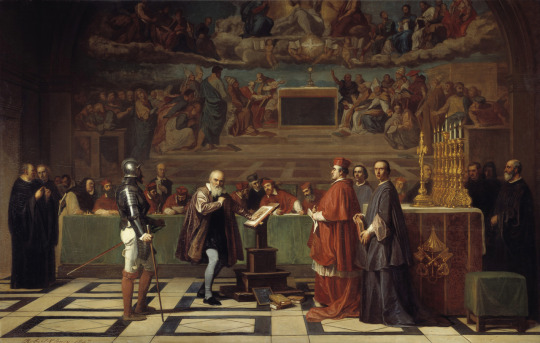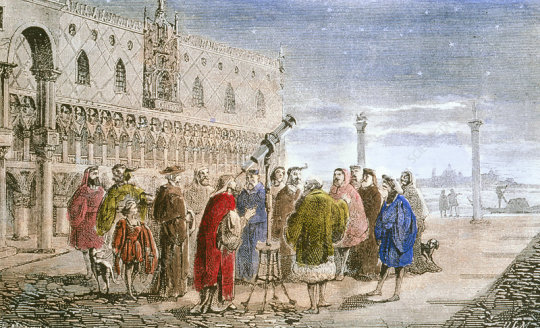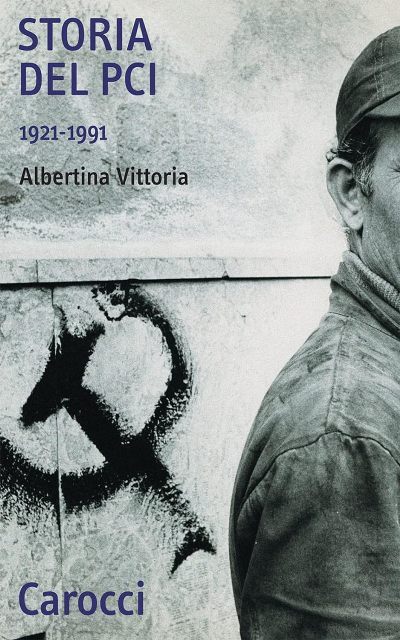#Andrea Bertini
Explore tagged Tumblr posts
Text
Si può affermare che l’operazione compiuta da Togliatti di rinnovamento nella continuità della cultura politica del Pci ottenne alcuni risultati
Se la necessità di ribadire un concetto che si sarebbe dovuto esaurire già dieci anni prima mostrava la permanenza di una speranza, proprio l’ideale continuità con la storia dell’Urss andava a corroborare quanto era già stato ribadito: “Qualcuno ha voluto parlare, a proposito di questa molteplice nostra azione politica, di tatticismo, di semplice astuzia. Ha dimostrato di non capire la sostanza…

View On WordPress
2 notes
·
View notes
Text
Si può affermare che l’operazione compiuta da Togliatti di rinnovamento nella continuità della cultura politica del Pci ottenne alcuni risultati
Se la necessità di ribadire un concetto che si sarebbe dovuto esaurire già dieci anni prima mostrava la permanenza di una speranza, proprio l’ideale continuità con la storia dell’Urss andava a corroborare quanto era già stato ribadito: “Qualcuno ha voluto parlare, a proposito di questa molteplice nostra azione politica, di tatticismo, di semplice astuzia. Ha dimostrato di non capire la sostanza…

View On WordPress
2 notes
·
View notes
Text
Si può affermare che l’operazione compiuta da Togliatti di rinnovamento nella continuità della cultura politica del Pci ottenne alcuni risultati
Se la necessità di ribadire un concetto che si sarebbe dovuto esaurire già dieci anni prima mostrava la permanenza di una speranza, proprio l’ideale continuità con la storia dell’Urss andava a corroborare quanto era già stato ribadito: “Qualcuno ha voluto parlare, a proposito di questa molteplice nostra azione politica, di tatticismo, di semplice astuzia. Ha dimostrato di non capire la sostanza…

View On WordPress
3 notes
·
View notes
Text
Si può affermare che l’operazione compiuta da Togliatti di rinnovamento nella continuità della cultura politica del Pci ottenne alcuni risultati
Se la necessità di ribadire un concetto che si sarebbe dovuto esaurire già dieci anni prima mostrava la permanenza di una speranza, proprio l’ideale continuità con la storia dell’Urss andava a corroborare quanto era già stato ribadito: “Qualcuno ha voluto parlare, a proposito di questa molteplice nostra azione politica, di tatticismo, di semplice astuzia. Ha dimostrato di non capire la sostanza…

View On WordPress
1 note
·
View note
Text
Il nodo gordiano che aprirà spazi alla sinistra del Pci
La storiografia che recentemente si è occupata di ricostruire la storia politica degli anni Settanta ha prevalentemente individuato le origini della nuova sinistra nella reazione di alcuni intellettuali dopo la svolta del 1956 <5.Un’interpretazione di questo genere, se ha giustamente nobilitato l’elemento disgregante che soprattutto la critica allo stalinismo provocò sulle intelligenze di…

View On WordPress
#1944#1945#1946#1956#Albertina Vittoria#Andrea Bertini#astuzia#Chrušcëv#Congresso#Democrazia#impossibilità#insurrezione#legalità#Palmiro Togliatti#PCI#Pcus#progressiva#rapporto#Resistenza#rivoluzione#Salerno#segreto#sinistra#stalinismo#Statuto#svolta#tattica#V#VIII#XX
0 notes
Text
Il nodo gordiano che aprirà spazi alla sinistra del Pci
La storiografia che recentemente si è occupata di ricostruire la storia politica degli anni Settanta ha prevalentemente individuato le origini della nuova sinistra nella reazione di alcuni intellettuali dopo la svolta del 1956 <5.Un’interpretazione di questo genere, se ha giustamente nobilitato l’elemento disgregante che soprattutto la critica allo stalinismo provocò sulle intelligenze di…

View On WordPress
#1944#1945#1946#1956#Albertina Vittoria#Andrea Bertini#astuzia#Chrušcëv#Congresso#Democrazia#impossibilità#insurrezione#legalità#Palmiro Togliatti#PCI#Pcus#progressiva#rapporto#Resistenza#rivoluzione#Salerno#segreto#sinistra#stalinismo#Statuto#svolta#tattica#V#VIII#XX
0 notes
Text









Blue Blood / Sangue blu (1914)
[letterboxd | imdb]
Director: Nino Oxilia
Cinematography: Giorgio Ricci
Performers: Francesca Bertini, Angelo Gallina, & Andrea Habay
#1910s#1914#Nino Oxilia#Francesca Bertini#Giorgio Ricci#cinematography#cinema#cinema italiano#my edits#italian film#silent cinema#silent film#silent era#classicfilmblr#classic film#classic cinema#film#filmblr#classic movies#silent movies
12 notes
·
View notes
Photo

~ Galileo Galilei showing the Doge of Venice, Leonardo Donati, how to Use the Telescope~
Giuseppe Bertini
1858, fresco, Villa Andrea Ponti, Varese.
It was 25 of August 1609 when the 90th Doge, Leonardo Donato, and other members of the Venetian senate accompanied Galileo to the top of the campanile of St Mark’s Basilica, where each took it in turn to look through the instrument.
The meeting had been arranged by Galileo’s friend, Paolo Sarpi, who was a scientist, lawyer and statesman employed by the Venetian government. The two were both professors at the University of Padua.
Galileo, whose knowledge of the universe led him to be called the ‘father of observational astronomy’, was for many years wrongly credited with the invention of the telescope when in fact the first to apply for a patent for the device was a Dutch eyeglass maker named Hans Lippershey.
Galileo was the first to realize the potential of the telescope for astronomical study.
He was able to make out mountains and craters on the moon, as well as a ribbon of diffuse light arching across the sky ~ the Milky Way. Galileo also discovered the rings of Saturn, sunspots and four of Jupiter's moons.

~ Imaginative painting showing Galileo Galilei displaying his telescope to Leonardo Donato~
Henry-Julien Detouche, c. 1900.
It was his findings on Jupiter’s moons in January 1610 that would lead him indirectly into trouble with the Roman Inquisition over his belief in heliocentrism, the concept that the sun and not the Earth was the centre of the solar system, as had been theorized by the Polish scientist Nicolaus Copernicus in the previous century.
In observing the three objects in proximity to the planet Jupiter that he had originally thought to be distant stars, he noticed that their position relative to the planet changed in a way that would have been inexplicable if they had really been fixed stars.

~ Galileo before the Holy Office ~
Joseph-Nicolas Robert-Fleury, 1797–1890
1847.
One day he noticed that one of them had disappeared altogether only to reappear later and within a few days had concluded that they were orbiting Jupiter. When, later in the year, he discovered that the planet Venus had ‘phases’ similar to the earth’s Moon, when differences in appearance suggested different positions in the sky, he began to subscribe firmly to the Copernican theory.
This flew in the face of a major part of Roman Catholic belief, based on the Aristotelian principle that all heavenly bodies orbited the Earth.
In time, Galileo was found guilty of heresy and forced to recant his views under threat of torture. He would have spent the last years of his life in prison had the court not shown some clemency and commuted his sentence to house arrest.
Many centuries passed until 1992 that the church (Vatican) admitted that Galileo’s theory was the right one.

#Galileo Galilei#astronomy#venice#paintings#artworks#art of the day#artist#history#photo of the day#best photo#historical portrait#heliocentrismo#galileo
45 notes
·
View notes
Photo



By Samantha Hughes-Johnson.
On this day (22 June) in 1633, Galileo Galilei (the polymath who is now renown for his contributions to the scientific fields of astronomy, engineering, physics and mathematics) was forced to recant his theory that the earth orbited the sun: a view known as heliocentrism.
Despite operating during the Inquisition and working on innovative and often controversial theoretical approaches, Galileo was still able to make significant scientific discoveries and publish various findings, as he often worked under the protection of powerful patrons (the Medici and the Pope included). However, when Galileo published his Dialogue Concerning the Two Chief World Systems, the polymath was accused of heresy and called to Rome to defend his writings.
The Inquisition found Galileo guilty of suspected heresy and despite being awarded a prison sentence, this penalty was later commuted to house arrest. He remained under this restriction until his death in 1642.
It was not until 1992 that the Vatican admitted that Galileo’s theory was correct.
Images: Giuseppe Bertini, Galileo Galilei showing the Doge of Venice, Leonardo Donati, How to Use the Telescope, 1858, fresco, Villa Andrea Ponti, Varese. Wikimedia Commons.
Domenico Tintoretto, Portrait of Galileo Galilei, 1601-1607, oil on canvas, The National Maritime Museum, Greenwich. Wikimedia Commons.
Aristodemo Costoli, Statue of Galileo Galilei, 19th Century, marble, Loggiato of the Uffizi, Florence. Wikimedia Commons.
References: Galileo Galilei, Dialogue Concerning the Two Chief World Systems, Ptolemaic and Copernican, Berkley: University of California Press, 2001.
Rachel Hilliam, Galileo Galilei: Father of Modern Science, New York: The Rosen Publishing Group, 2005.
“Vatican Admits Galileo was Right.” In The New Scientist, 7 November, 1992.
15 notes
·
View notes
Text
La seconda importante iniziativa del Sessantotto avviene all’interno del mondo operaio
Il rovesciamento delle priorità – dalla riforma alla rivoluzione – aveva portato gli studenti ad individuare nell’unione con la classe operaia, o nelle forme più ideali con un più generico mondo degli esclusi, lo strumento per dare attuazione a quel progetto. Si poneva dunque il problema, classico per ogni soggetto rivoluzionario, del che fare. La questione diventava bruciante perché spinte verso…

View On WordPress
#1967#1968#1969#1970#Aldo Moro#Andrea Bertini#cattolici#DC#Giulia Di Filippo#lavoratori#opeari#PCI#proteste#PSI#Psiup#ragazzi#scioperi#Sessantotto#studenti
0 notes
Text
Il nodo gordiano che aprirà spazi alla sinistra del Pci
La storiografia che recentemente si è occupata di ricostruire la storia politica degli anni Settanta ha prevalentemente individuato le origini della nuova sinistra nella reazione di alcuni intellettuali dopo la svolta del 1956 <5.Un’interpretazione di questo genere, se ha giustamente nobilitato l’elemento disgregante che soprattutto la critica allo stalinismo provocò sulle intelligenze di…

View On WordPress
#1944#1945#1946#1956#Albertina Vittoria#Andrea Bertini#astuzia#Chrušcëv#Congresso#Democrazia#impossibilità#insurrezione#legalità#Palmiro Togliatti#PCI#Pcus#progressiva#rapporto#Resistenza#rivoluzione#Salerno#segreto#sinistra#stalinismo#Statuto#svolta#tattica#V#VIII#XX
0 notes
Text
Il nodo gordiano che aprirà spazi alla sinistra del Pci
La storiografia che recentemente si è occupata di ricostruire la storia politica degli anni Settanta ha prevalentemente individuato le origini della nuova sinistra nella reazione di alcuni intellettuali dopo la svolta del 1956 <5.Un’interpretazione di questo genere, se ha giustamente nobilitato l’elemento disgregante che soprattutto la critica allo stalinismo provocò sulle intelligenze di…

View On WordPress
#1944#1945#1946#1956#Albertina Vittoria#Andrea Bertini#astuzia#Chrušcëv#Congresso#Democrazia#impossibilità#insurrezione#legalità#Palmiro Togliatti#PCI#Pcus#progressiva#rapporto#Resistenza#rivoluzione#Salerno#segreto#sinistra#stalinismo#Statuto#svolta#tattica#V#VIII#XX
0 notes
Text
Il nodo gordiano che aprirà spazi alla sinistra del Pci
La storiografia che recentemente si è occupata di ricostruire la storia politica degli anni Settanta ha prevalentemente individuato le origini della nuova sinistra nella reazione di alcuni intellettuali dopo la svolta del 1956 <5.Un’interpretazione di questo genere, se ha giustamente nobilitato l’elemento disgregante che soprattutto la critica allo stalinismo provocò sulle intelligenze di…

View On WordPress
#1944#1945#1946#1956#Albertina Vittoria#Andrea Bertini#astuzia#Chrušcëv#Congresso#Democrazia#impossibilità#insurrezione#legalità#Palmiro Togliatti#PCI#Pcus#progressiva#rapporto#Resistenza#rivoluzione#Salerno#segreto#sinistra#stalinismo#Statuto#svolta#tattica#V#VIII#XX
0 notes
Photo

Photograph of Giuseppe Bertini
Giuseppe Bertini (1825–1898) was an Italian painter, active in his native Milan.
He studied at the Brera Academy under Luigi Sabatelli and Giuseppe Bisi, and in 1845 was awarded the Gran premio di pittura dell'Accademia di Brera on the strength of a picture of the meeting between Dante and Fra Ilario. He also painted the Triumphal entry of the allied sovereigns into Milan after the Battle of Magenta (after 1859). He also painted frescoes on a vaulted room of the residence of the Puricelli Guerra, representing the great men of the Middle Ages, backgrounded against perspectives of Gothic architecture. He painted a Torquato Tasso introduced to Emmanuel Philibert; Death of St Joseph (commissioned by a parish in Palermo; an Assumption of the Virgin for a church in Valmarana in Altavilla Vicentina; an altarpiece of Vision of St Francis of Assisi for the church of San Babila, Milan; paintings for the palazzo of Count Ernesto Turati in Milan; and frescoes for the house of Cavalier Andrea Ponti in Varese representing Guido d'Arezzo teaching singing to a children's choir, as well as scenes from the life of Volta, Galileo, and Columbus. Among his masterworks is the fresco decoration of the Greek-Orthodox church of Trieste. He painted the sipario in collaboration with Raffaele Casnedi for the theater of La Scala in 1862.
The Sala Dorata in the Poldi-Pezzoli Museum at Milan has a series of three mural panels by Bertini at the end of the room opposite the window, the central one representing Painting, Sculpture, and Architecture, and the two lateral ones symbolizing Poetry and Music. Bertini painted decorations on the ceiling of the Dante Room. Bertini served as one of the founders and directors of this museum.
Between 1848 and 1860 he was occasionally employed as an instructor in the Brera Academy, and upon the reorganization of that institution in 1860 he was placed permanently in charge of one of the two schools of painting, (Hayez being in charge of the other), and continued to hold his professorship until the end of the 19th century. Giuseppe Barbaglia, Cesare Bertolotti, Emilio Cavenaghi, Francesco Filippini, Andrea Fossati,[3] Pietro Michis, and Lodovico Pogliaghi were among his pupils. Pompeo Bertini, his brother, made stain-glass windows sometimes using designs by Giuseppe.
7 notes
·
View notes
Photo

riccardo bertini & andrea di cesare a corto live a cerveteri. molto bello.
1 note
·
View note
